XV Century Spanish-suited playing cards
XV Century Spanish-suited playing cards with moorish influences
Of relevance to the early origins in Spain of the 'Portuguese' suit-system are some archaic cards possibly made in Catalonia or Mallorca, currently preserved in the Spielkarten-Museum at Leinfelden.
The 22 surviving cards include an 8 and 9 of swords with straight intersecting swords (also nine of batons), which are also associated with later Portuguese and Italian Minchiate and Sicilian Tarot cards. The Portuguese-suited pack was being used in Spain intil quite late in the 16th century. The ace of swords is supported by 2 lions, a feature seen in some other early Catalan cards. Perhaps most noteworthy are the cavalier and king of swords who hold double-panelled Nasrid Saracenic shields, common in Muslim-occupied Spain at that time, with a kind of double tassel made of silk and feathers. This feature can be seen in another early Catalan pack►
The cavalier of batons is a centaur, the baton being rather knobbly, and the ‘sota’ (male jack instead of a maid) is a wild man whose body is covered in hair. The king of batons is seated on a throne and is the only card carrying an inscription, which is in gothic lettering. Research by Jean-Pierre Garrigue (2015; p.65) points to a possible Mallorcan or Aragonese origin for this inscription. Some of the lower value numeral cards contain small animals as decoration. Overall these cards point to early Catalonian influence in the spread of playing cards due to their trading activities throughout the mediterranean basin, including near Eastern and moorish destinations during the Mamluk Sultanate.
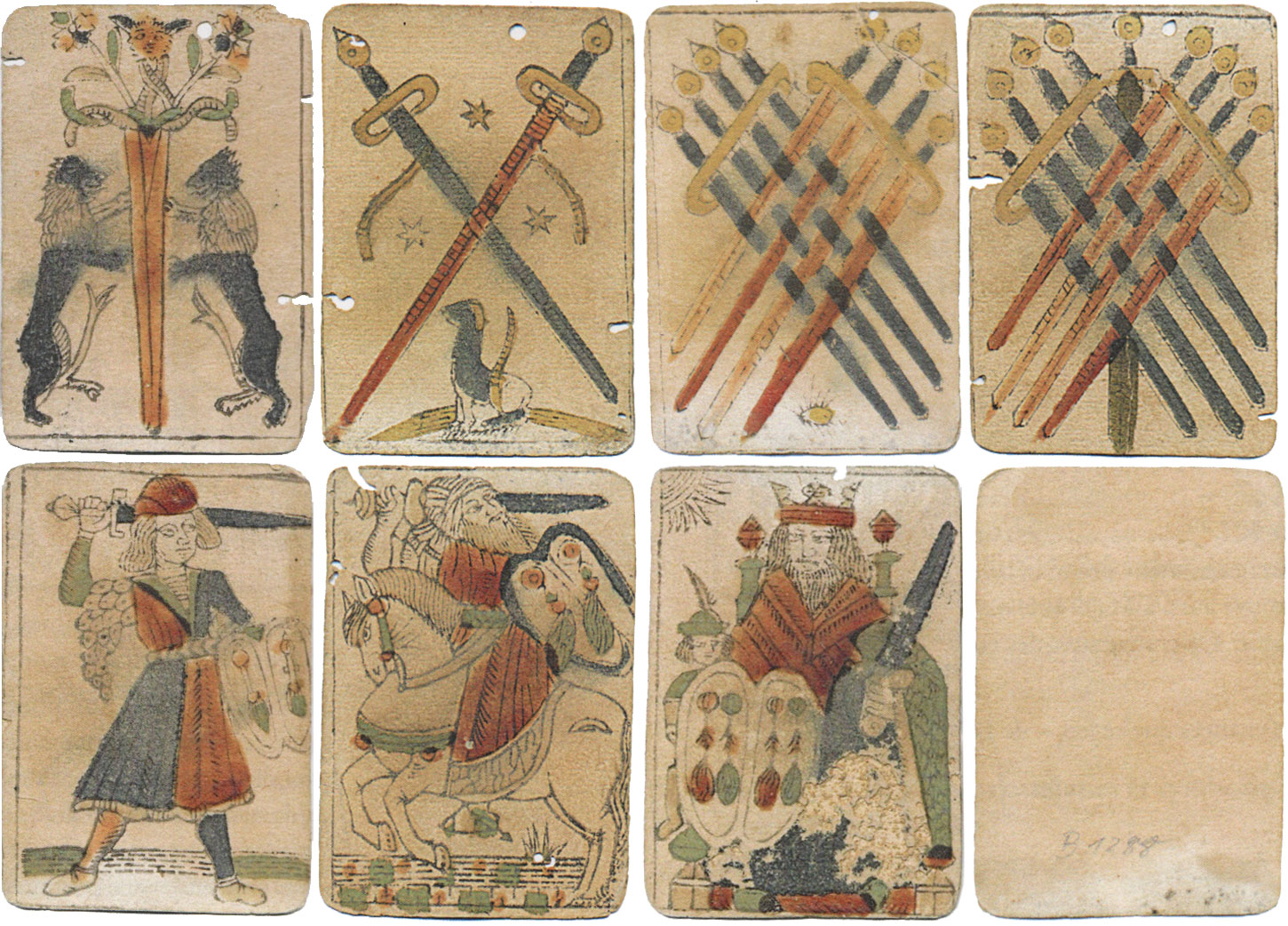
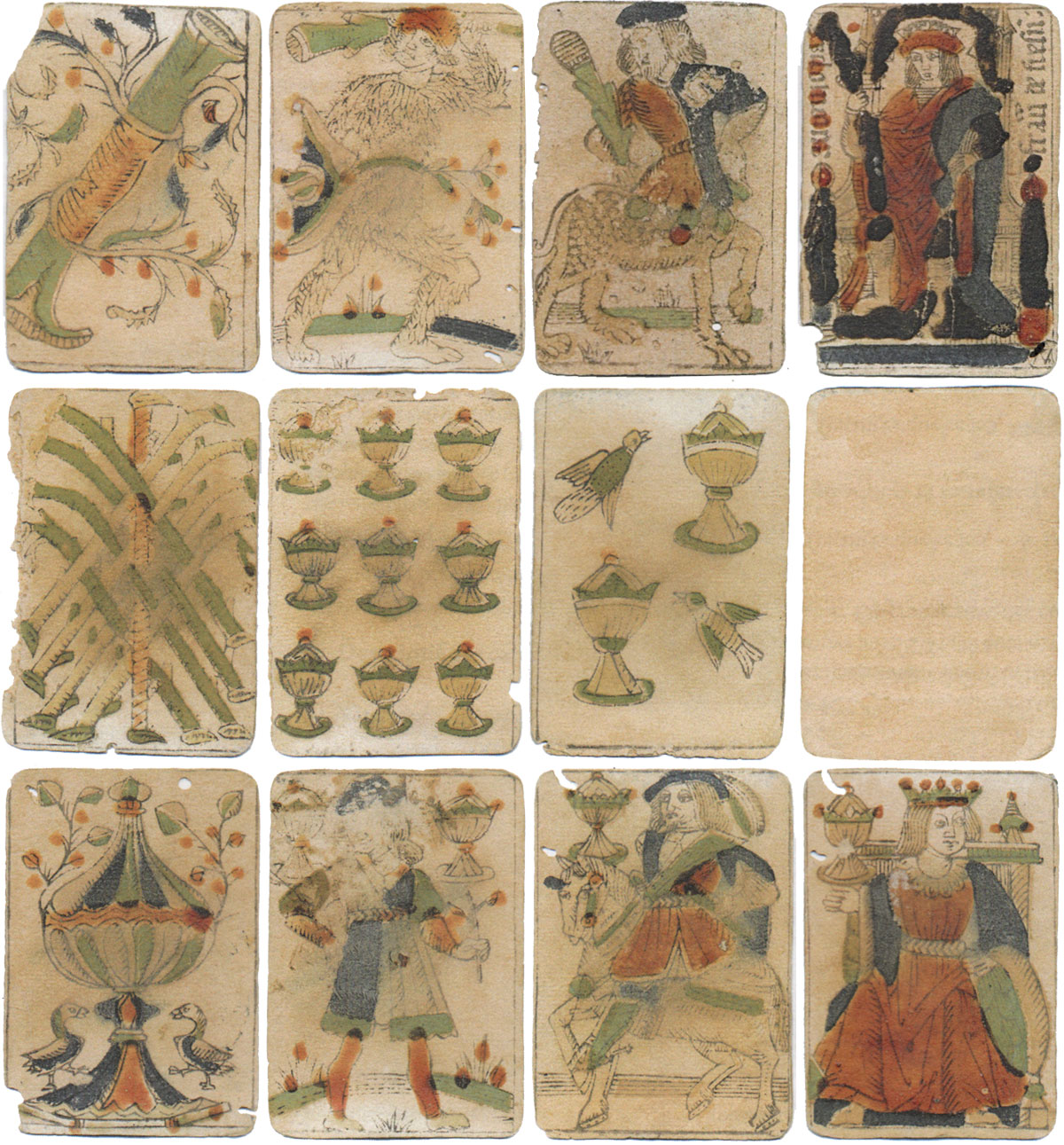
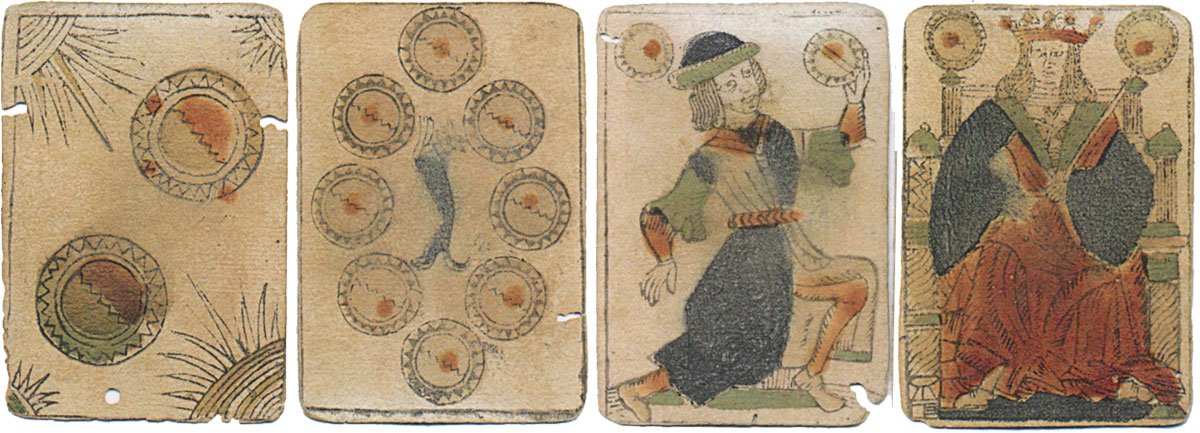
Above: 22 archaic Spanish-suited playing cards, currently in the Leinfelden Spielkartenmuseum (Germany) Inv. Nr. B-1288. The museum describes the cards as “Provencalisch” and 16th century but further research suggests the cards may be Catalan or Mallorcan, late 15th century. Printed from woodblocks hand-coloured. The complete pack probably contained 48 cards, ie. numerals 1-9 with 3 court cards per suit (no 10s). Images from Jean-Pierre Garrigue, 2015.
Further References
Wikipedia: Nasrid dynasty►
Wikipedia: Wild man►
Garrigue, Jean-Pierre: Le Carte à Jouer en Catalogne XIV & XVI siècles, Les Presses Littéraires, 2015
By Simon Wintle
Spain • Member since February 01, 1996 • Contact
I am the founder of The World of Playing Cards (est. 1996), a website dedicated to the history, artistry and cultural significance of playing cards and tarot. Over the years I have researched various areas of the subject, acquired and traded collections and contributed as a committee member of the IPCS and graphics editor of The Playing-Card journal. Having lived in Chile, England, Wales, and now Spain, these experiences have shaped my work and passion for playing cards. Amongst my achievements is producing a limited-edition replica of a 17th-century English pack using woodblocks and stencils—a labour of love. Today, the World of Playing Cards is a global collaborative project, with my son Adam serving as the technical driving force behind its development. His innovative efforts have helped shape the site into the thriving hub it is today. You are warmly invited to become a contributor and share your enthusiasm.

Leave a Reply
Your Name
Just nowRelated Articles
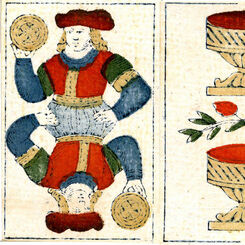
Clemente Roxas double-ended Spanish pack
Double-ended Spanish-suited playing cards published by Clemente de Roxas in Madrid, 1814.
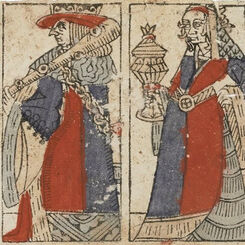
J. Deluy c.1490s
Archaic Spanish-suited cards produced by J. Deluy c.1490s.
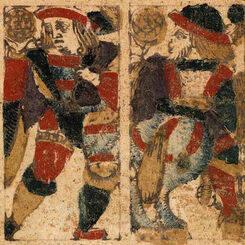
Toledo, 1584
Archaic Spanish-suited deck with 48 cards made in Toledo in 1584.
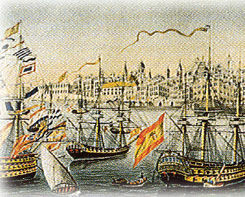
Cádiz Pattern playing cards
A popular Spanish playing card pattern widely exported to Spanish-influenced markets.

Heráldica Castanyer
Spanish Catalan pattern No.6 by Heráldica Castanyer, Sabadell (Barcelona), c.1980.
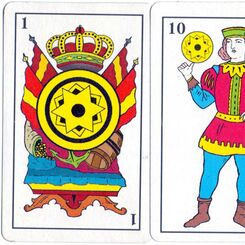
Mas-Reynals Catalan Pattern
Mas-Reynals standard Catalan pattern comes in several slightly different versions.

XV Century Catalan playing cards
XV Century Catalan Playing Cards, featuring four female Sotas, four Aces and four cards from the sui...

Tax on Spanish Playing Cards
Taxation on Spanish playing cards, the monopolies and smuggling.

S. Giráldez, Barcelona
Standard Spanish Catalan pattern playing cards by S. Giráldez, Barcelona, c.1905.

Baraja de Amor
Hijos de José Garcia Taboadela was a book-seller who also published this charming pack of lovers' fo...

Sanmartí, 1840
Sanmartí, 1840.
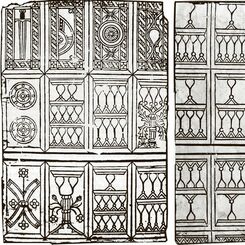
Moorish playing cards
These two uncoloured, uncut sheets of early Moorish playing cards were formerly preserved in the Ins...

Gothic Spanish-suited cards
These cards may be a typical example of early 'standard' Spanish playing cards, maybe from before Co...

Francisco Flores
Playing cards in this style have been discovered in various parts of the world, suggesting that they...

Spanish Playing Cards ~ La Baraja Española
Spain has played a pivotal role in the history of playing cards in Europe and Latin America.

Significado de los Naipes Españoles
Cartomantic meanings of Spanish playing cards by Benita the Witch (XVI century), published by Chocol...

Baraja Morisca — Early XV century playing cards
Primitive Latin suited pack, dated by paper analysis as early XV century, which makes this one of th...

Spanish National Pattern
Probably originating in Spain in the seventeenth century or even earlier, this pattern became strong...

Hand-made Spanish Suited Playing Cards
Decks are made on two-ply pasteboard which reproduces the tactile quality of antique cards.
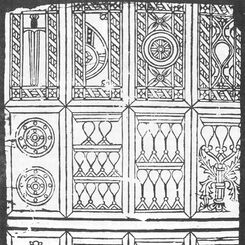
A Moorish Sheet of Playing Cards
This article was originally published in “The Playing-Card”, the Journal of the International Playin...
Most Popular
Our top articles from the past 60 days


 Your comment here. Your comment here. Your comment here. Your comment here. Your comment here. Your comment here. Your comment here. Your comment here. Your comment here. Your comment here. Your comment here. Your comment here. Your comment here. Your comment here. Your comment here. Your comment here. Your comment here. Your comment here. Your comment here. Your comment here. Your comment here. Your comment here. Your comment here. Your comment here. Your comment here. Your comment here. Your comment here. Your comment here. Your comment here. Your comment here. Your comment here. Your comment here.
Your comment here. Your comment here. Your comment here. Your comment here. Your comment here. Your comment here. Your comment here. Your comment here. Your comment here. Your comment here. Your comment here. Your comment here. Your comment here. Your comment here. Your comment here. Your comment here. Your comment here. Your comment here. Your comment here. Your comment here. Your comment here. Your comment here. Your comment here. Your comment here. Your comment here. Your comment here. Your comment here. Your comment here. Your comment here. Your comment here. Your comment here. Your comment here.




















